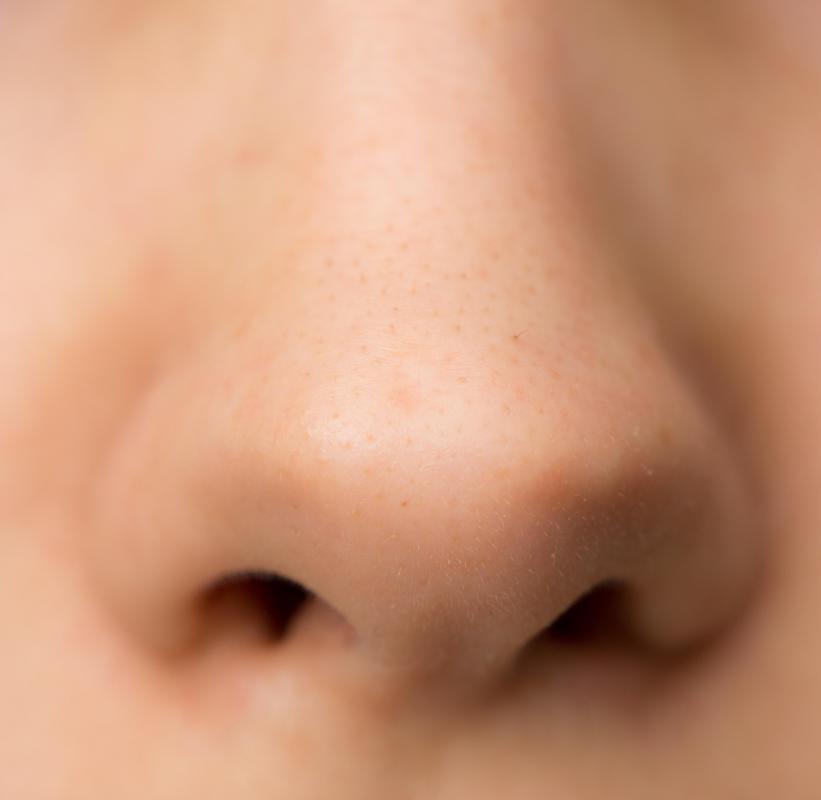At TheHealthBoard, we're committed to delivering accurate, trustworthy information. Our expert-authored content is rigorously fact-checked and sourced from credible authorities. Discover how we uphold the highest standards in providing you with reliable knowledge.
What Is a Rhinolith?
Rhinoliths, uncommon but intriguing nasal occurrences, are calcified masses that can form within the nasal cavity. According to a study published in the International Journal of Surgery Case Reports, rhinoliths are relatively rare, with incidence rates not well-documented due to their often asymptomatic nature. When symptoms do arise, they can include nasal obstruction, discharge, and discomfort.
Diagnosing a rhinolith typically involves a combination of physical examination and imaging techniques, such as X-rays or CT scans, to confirm the presence of these nasal stones. Treatment is essential to alleviate discomfort and prevent potential complications, with the primary approach being the careful extraction of the rhinolith, often followed by addressing any secondary infections. Understanding what is a rhinolith is crucial for those experiencing persistent nasal symptoms, as timely intervention can lead to a swift resolution of this condition.

In order to understand why a rhinolith might develop, it helps to understand the basics about the structure and function of the nose. Looking at a human face, the nose appears as a protuberance that ends in two openings referred to as the nares. They open into two symmetric chambers called the vestibules that are divided by the nasal septum; this opening extends upwards and backward, making the internal nasal cavity expand to a larger volume that its external appearance suggests. The nose is important because it warms and humidifies the air entering the human body and traveling to the lungs, and also filters this air by removing harmful particulate matter. In addition, the nose is important because the sinuses, which are hollow spaces present in the anterior face, drain into the nasal cavity.

Rhinoliths can develop in the internal nasal cavity. Typically a stone forms around a small structure, such as a piece of dried mucus or a foreign object inserted into the nose. Often the rhinolith is composed of deposits of minerals such as calcium. The stones can vary in size from a fraction of an inch to greater than an inch (2.54 cm) in diameter, and they preferentially form in the area where the sinuses drain their contents into the nasal cavity. Sometimes infection of the nose with different bacterial species can promote the growth of these nasal stones.

Symptoms experienced by a patient with a rhinolith can vary, but might include pain, swelling, abnormal nasal discharge, and a sensation of fullness. The affected patient might have a decreased sense of smell as a result of the obstruction caused by the stone. Most often the symptoms caused by this condition only affect one side of the nose.
Diagnosis of a rhinolith can be done using a number of different methods. In some cases, using a penlight to look up into the nares could help a doctor to make the diagnosis of a nasal stone. With other patients, doctors who specialize in diseases of the nose could use specialized scopes in order to visualize the nasal cavity more thoroughly. Other radiographic techniques, such as computed tomography (CT) scanning or x-rays, could also assist in diagnosis.

Treatment of a rhinolith focuses on removal of the stone. Sometimes the stone must be broken down into smaller component parts before it can be extracted. Often the nasal cavity is swabbed and cultured to see if there is any abnormal bacterial growth present, and if there is, patients are treated with appropriate antibiotic medications.
FAQ on Rhinolith
What is a rhinolith and how does it form?

A rhinolith is a calcified mass that forms within the nasal cavity. It develops when a foreign body, such as a small particle of food, a bead, or a seed, becomes lodged in the nose and is gradually encased in calcium and magnesium salts over time. This process can take years, and the presence of bacteria can accelerate the calcification. Rhinoliths are relatively rare, with incidence rates not well-documented in medical literature, but they are known to occur across all age groups.
What are the symptoms of a rhinolith?

Symptoms of a rhinolith can vary depending on its size and location but often include unilateral nasal obstruction, foul-smelling nasal discharge, and sometimes nosebleeds. Chronic cases may lead to symptoms such as facial pain or headaches. In some instances, a rhinolith may cause no symptoms at all and can be discovered incidentally during a nasal examination or imaging for unrelated issues.
How is a rhinolith diagnosed?

Diagnosis of a rhinolith typically involves a clinical examination, where a healthcare provider may notice a hard mass in the nasal cavity. To confirm the diagnosis, imaging studies such as X-rays or CT scans are used, which can reveal the density and exact location of the rhinolith. These imaging techniques are crucial for planning the appropriate method of removal.
What are the treatment options for a rhinolith?
The primary treatment for a rhinolith is its removal, which can often be performed in an outpatient setting. Small rhinoliths may be removed using forceps or suction under local anesthesia. Larger or more complex cases might require endoscopic surgery to ensure complete removal and to minimize damage to the surrounding nasal tissues. Post-removal, nasal irrigation and antibiotics may be prescribed to prevent infection.
Can rhinoliths be prevented?
Preventing rhinoliths involves addressing the factors that can lead to their formation. Good nasal hygiene and prompt treatment of nasal infections can reduce the risk. It's also important to educate children about the dangers of inserting foreign objects into their noses. Regular check-ups with an ENT specialist can help identify and manage any nasal issues before they lead to the formation of a rhinolith.
AS FEATURED ON:
AS FEATURED ON:

















Discuss this Article
Post your comments